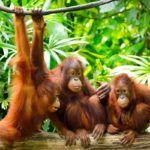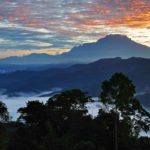An in depth experience of culture and adventure while visiting amazing sights in Habarana and many other secret treasures of this island.
Day 1: COLOMBO
Arrive in Colombo. After clearing immigration and customs formalities our uniformed representative will be outside the baggage hall area to meet & greet and transfer to the hotel. Balance of the day at leisure.
Dinner and overnight at Kingsbury Hotel, Colombo..
Day 2: COLOMBO / HABARANA / POLONNARUWA
Breakfast at the hotel. This morning proceed to Habarana. Habarana is situated in the heart of Sri Lanka’s cultural triangle and is part of the Mathale District. Evening a visit to UNESCO World heritage Plonnaruwa Ancient City. Polonnaruwa – is the 2nd capital of Sri Lanka. Built in the 11th and 12th centuries A.D, and is a world heritage site. The ruins of the Royal Palace, the Gal Viharaya (3 splendid statues of the Buddha in u pright, sedentary and recumbent postures carved out of rock) are the main attraction. See the audience hall, the lotus bath, the Polonnaruwa statue (12th century) and the Parakrama Sam udra tank (lake) built by king Parakramabahu the great. There are also ruins of famous places of worship such as the Shiva temple, the Lankatileka, the Watadage, the Galpotha, the Kiri Vihare Dagoba and the remains of a former temple of the tooth. Proceed for check in at the hotel.
Dinner and overnight at Cinnamon Lodge Hotel, Habarana.
Day 3: HABARANA / DANBULLA CAVES / HABARANA
Breakfast at the hotel. Today is a full day of sights. Proceed to Sigiriya to climb and sightseeing of the UNESCO world Heritage Sigiriya Rock Fortress. Sigiriya sometimes also referred to as the eighth wonder of the world dates back from over 7,000 years ago, through Pre-Historic to Proto-Historic to Early Historic times, then as a rock-shelter mountain monastery from about the 3rd century BC, with caves prepared and donated by devotees to the sangha.
The garden city and the palace was built by Kasyapa 477 – 495 AD. Then after Kasyapa’s death it was a monastery complex upto about the 14thcentury. Sigiriya is a unique witness to the civilization of Ceylon during the years of the reign of Kassapa I. The site of the ‘Lion Mountain’ was visited from the 6th century AD, by passionate admirers. The frescoes of Sigiriya inaugurated a pictorial style which endured over many centuries. Halfway up the rock, within an inaccessible rocky shelter in the vertical wall of the western face these rock paintings can be seen which have brought universal acclaim to the site of Sigiriya – ‘The Maidens of the Clouds’, 21 non-identified female figures, comparable to the most beautiful creations of Ajanta. Though traces of plaster and pigments occur all over this area, only two pockets of paintings survive. These are in a depression of the rock face, about a 100 meters above the ground level. These paintings represent the earliest surviving examples of a Sri Lanka school of classical realism, already fully evolved by the 5th century, when these paintings had been made. Earlier the Sigiri style had been considered as belonging to the Central Indian school of Ajanta, but later considered as specifically different from the Ajanta paintings. The ladies depicted in the paintings have been variously identified as Apsaras (heavenly maidens), as ladies of Kasyapas court and as Lightening Princess and Cloud Damsels.
At the summit of the rock is the fortified palace with its ruined buildings, its cisterns and its rock sculptures. At the foot of the rock are the two quarters of the lower city which are defended by a massive wall: the eastern quarter (perhaps postdating the 5th century). Sri Lankan architectural tradition is well displayed at Sigiriya, the best preserved city centre in Asia from the first millennium, with its combination of buildings and gardens with their trees, pathways, water gardens, the fusion of symmetrical and asymmetrical elements, use of varying levels and of axial and radial planning.
The Complex consists of the central rock, rising 200 meters above the surrounding plain, and the two rectangular precincts on the east (90 hectares) and the west (40 hectares), surrounded by two moats and three ramparts.
The plan of the city is based on a precise square module . The layout extends outwards from co-ordinates at the centre of the palace complex at the summit, with the eastern and western axis directly aligned to it. The water garden, moats and ramparts are based on an ‘echo plan’ duplicating the layout and design on either side. This city still displays its skeletal layout and its significant features. 3 km from east to west and 1 km from north to south it displays the grandeur and complexity of urban-planning in 5th century .
Later visit the UNESCO World Heritage Dambulla Cave Temple. The rock of Dambulla is the centre of a Buddhist cave-temple complex established in the 3rd century B.C. a nd occupied continuously to this day. This cultural landscape is an extraordinary and unique complex: the cave-temple, rock paintings in five caves and 157 statues of various sizes. Dambulla bears witness in its richly layered composite nature to the use of the entire site for close to four millennia.
A 4WD Jeep Safari at Minneriya National park is planned for the evening, Return to the hotel .
Dinner and overnight at Cinnamon Lodge Hotel , Habarana.
Day 4: HABARANA / PASSIKUDAH
Breakfast at the hotel. This morning a new experience awaits in Passikudah. Pasikuda (Passekudah bay), situated along the east coast of the island Pasikuda ( about 35 kilometers northwest of Batticaloa, in Batticaloa District), is easily one of the best beaches to be found in Sri Lanka, with warm and sunny weather all throughout the year. The sea is a delight in its self; calm, clear, and ideal for swimming, diving or snorkeling.
Pasikudah is known to have one of the longest stretches of shallow coastline in the world. In other words, people walk kilometers into the sea because the water is only a few inches deep. Continue on to a visit at the Amethyst Hotel and Spa. Here free at Leisure at the Beautiful Passikudah Beach. Later check in at the hotel.
Dinner and overnight at Uga bey Hotel , Passikudah.
Day 5: PASSIKUDAH
After breakfast free at leisure at the beautiful Passikudah beach and Hotel.
Dinner and overnight at Uga bey Hotel , Passikudah.
Day 6: PASSIKUDAH / KANDY
After breakfast proceed to Kandy.
In Kandy witness a traditional Sri Lankan dance show. Kandyan dance takes its name from Kandy, the last royal capital of Ceylon, which is situated about 72 miles (120 kilometers) from the modern capital at Colombo. This genre is today considered the classical dance of Sri Lanka. In Sanskrit terminology it is considered pure dance (natta); it features a highly developed system of tala (rhythm), provided by cymbals called thalampataa. There are five distinct types; the ves, naiyandi, uddekki, pantheru, and vannams.The usual instruments used in the Kandyan dancing was Getaberaya the traditional drum of the hill country & a small cymbal like instrument called as ‘Thalampota’. Regardless of the changes the country & its culture went through Kandyan dancing still leads the arena as the national dance form of Sri Lanka.
In the late afternoon do city tour and shopping tour of Kandy including gem lapidary and museum. Later visit the Temple of the Tooth. The monumental ensemble of Kandy, rebuilt in the reign of Keerti Sri Rajasimha, is an outstanding example of a traditional type of construction in which the Royal Palace and the Temple of the Tooth of Buddha are juxtaposed.
The Temple of the Tooth, the palatial complex, and the sacred city of Kandy are directly and tangibly associated with the history of the spread of Buddhism, one of humanity’s great religions. Built to house the relic of the tooth of Buddha, which had come from Kalinga (Orissa State, India) to Sri Lanka during the reign of Sri Meghavanna (310-28), when it was transferred a final time, the Temple of Kandy bears witness to an ever flourishing cult.
Kandy, founded in the 14th century, is the southern tip of Sri Lanka’s ‘Cultural Triangle’. The city became the capital of the kingdom in 1592, during a troubled time when many of the islanders were fleeing to the interior, away from the coastal areas the European powers were fighting over. Although taken several times, the city remained one of the bastions of Sinhalese independence until the British troops entered it on 14 February 1815. From Vimala Dharma Suriya I (1591-1604) to Sri Wickrama Rajasinghe (1798-1815), it was the last seat of royal power. It remains the religious capital of Buddhism and a sacred city for millions of believers. Enshrined in the Dalada Maligawa is the relic of the tooth of Buddha which has long been greatly venerated. The ceremonial high point each year is the splendid ritual of the great processions on the feast of Esala Perahera.
Dinner and overnight stay in Cinnamon Citadel Hotel Kandy.
Day 7: KANDY / NUWARA ELIYA
After breakfast, proceed to Nuwara Eliya. En route witness a natural water fall, tea estates and tea factory.
Dinner and overnight stay in Grand Hotel Hotel Nuwara Eliya.
Day 8: NUWARA ELIYA / COLOMBO
After breakfast at the Hotel proceed to Colombo. City and shopping tour.Dinner and overnight at Kingsbury Hotel, Colombo.
Day 9: COLOMBO / DEPARTURE
After breakfast transfer to the airport for the departure flight.
– END TOUR –
HOME / PACKAGES / S.E. ASIA / SRI LANKA / Discover Sri Lanka




























